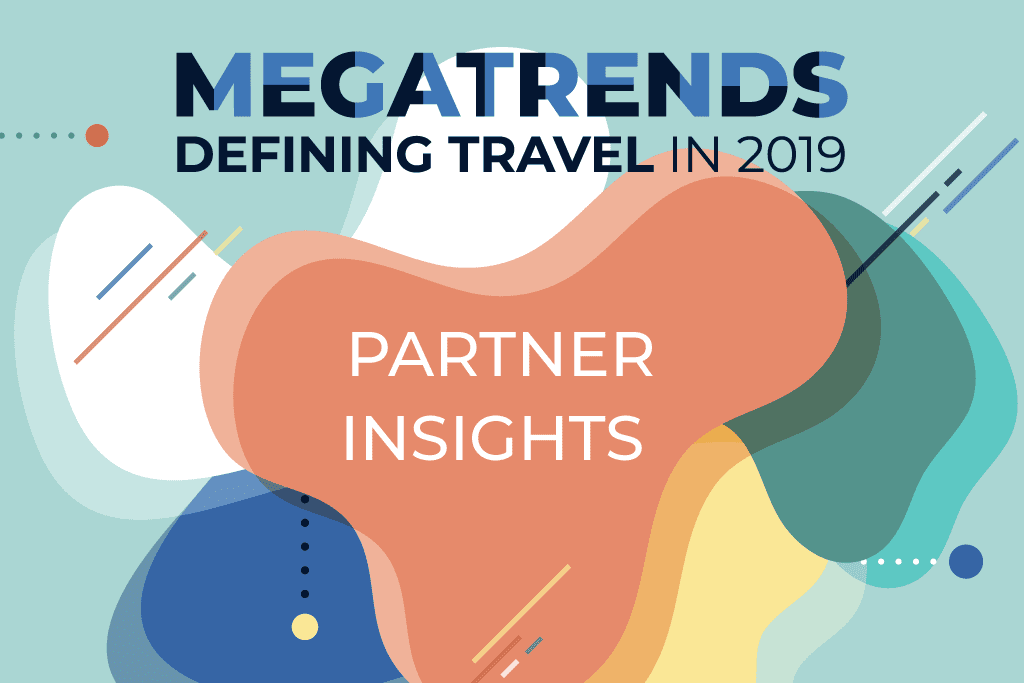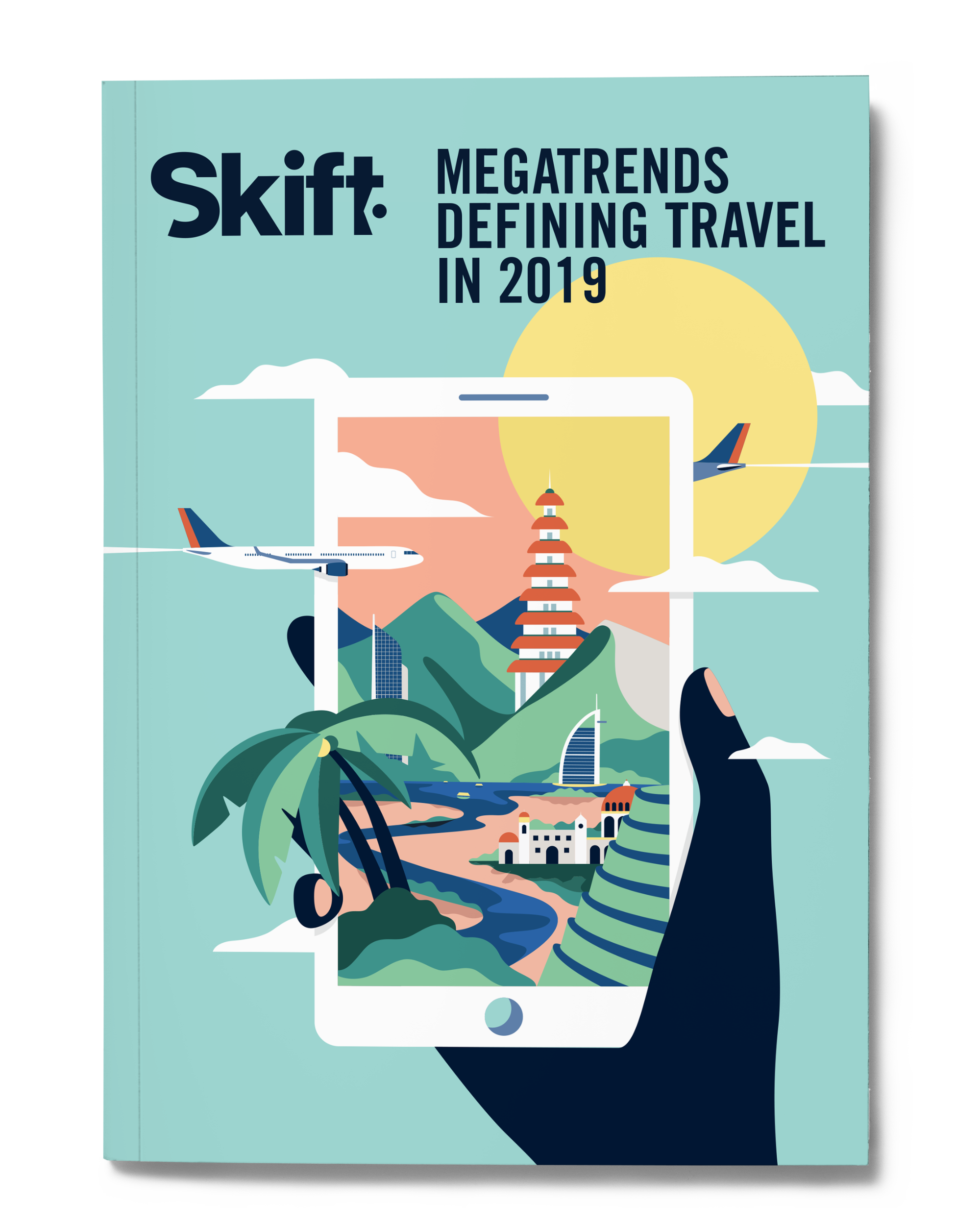Skift Take
Marketers are awash in data these days, but it’s what you do with it that makes the difference between a successful upsell and a missed opportunity.
This sponsored content was created in collaboration with a Skift partner.
We recently released our annual travel industry trends forecast, Skift Megatrends 2019. You can read about each of the trends on Skift, or download a copy of our magazine here.
Immense amounts of traveler data and advances in analytics technology have enabled travel marketers to effectively upsell and cross-sell throughout the traveler’s purchase journey. These new tools and capabilities are allowing brands to generate more revenue from every booking. But success hinges on thoroughly knowing the traveler and recognizing them across all touchpoints.
For travel marketers, building a comprehensive view of each traveler requires understanding his or her interactions with a particular brand, purchase patterns with other brands, and engagement with the travel sector at large. In order to create a holistic view of a traveler and understand his or her likelihood to purchase upgrades, the following knowledge sets must be brought together:
- First party or internal data
- Data on spend with competition
- Historic trip-related spend data
This kind of in-depth traveler information enables marketers to create comprehensive traveler profiles for each individual. Do they prefer luxury hotels? Are they looking for a trip that the kids will love? When and where do they typically travel? How much do they spend annually in your travel sector? These details will help travel brands accurately identify the moments in the booking journey that matter most to the traveler, and the information and offers that will be most relevant based on his or her individual needs. Then, companies can activate the right marketing strategy and channels to engage the traveler, regardless what stage of the buying process he or she is in.
Understanding a traveler on an individual level requires knowing him or her beyond a few specific transactions with a particular travel company or platform. Travel brands must have a deeper knowledge of where travelers book, when they are most likely to finalize their transaction, what devices they use, and what kinds of experiences they prefer. This shift to more people-based advertising not only increases share of wallet but also share of travel over time.
Personalizing Post-Purchase Ancillary Offers
Using aggregated data and machine learning, travel marketers can now more accurately identify their customers and serve custom messages, relevant upgrade offers, and other add-ons for their upcoming trips. This wave of personalized upselling and cross-selling is contingent on having access to travel purchase data — knowing that a person has booked a flight for a specific time or for a specific destination, for example. Then brands can activate trip-specific messages for that individual across their known channels and devices.
The travel industry is largely doing well with upselling and cross-selling during or post-purchase through email. However, most travel brands aren’t currently able to identify the same traveler across digital channels. For example, the same data used to serve a traveler customized offers through display advertising on one site can also be used to serve an offer through a mobile app, but many travel brands aren’t making those data connections. Better recognition of an individual across channels would enable the brand to connect not only through email but across the internet.
At Conversant, for example, we worked with an international cruise line that was looking to increase onboard revenue. In order to effectively do this, we helped identify existing guests for upcoming cruises, and then used profile data to determine which offers would be relevant to each customer. The existing guests were served relevant offers related to shore excursions or dining and beverage packages before they ever set foot on board. The campaign messaged upcoming guests that had already booked a cruise, resulting in 20,000 upgrade purchases and $5 million in incremental revenue.
This campaign’s success can be attributed to identifying those guests who were most likely to upgrade, and then connecting them to the right offer. Applying similar people-based marketing tactics to drive upsell and cross-sell initiatives throughout the consumer journey can yield additional incremental profit.
Finding the Moments to Upsell and Cross-Sell Throughout the Traveler’s Journey
Upselling and cross-selling don’t just apply to post-purchase activity — they should be an active part of the entire buying process. An integrated view of each individual will enable travel brands to know when to serve which message through which channel to effectively engage each traveler at every stage of his or her buying journey.
The purchase journey begins in the “dream” phase, when travelers begin to think of their next trip. Travel brands can get in front of the traveler in the early stages of their purchase journey, and strive to get a larger share in their overall travel. As is the case when upselling or cross-selling after a booking, understanding each traveler on an individual level before he or she makes a purchase is key to gaining a larger share of an individual’s travel spend.
For example, a travel booking platform can use historical purchase data to identify which traveler to target for packages during their initial search phases. If someone is searching for an airline ticket to Orlando, does it make sense to also show them a Disneyland package? Or are they a regular business traveler to the Orlando area? Upselling and cross-selling while the traveler is still in the planning phase can sometimes help to significantly simplify the booking process for certain kinds of travelers — and reduce wasted ad spend.
Using historical data and predictive analytics, a marketer can build comprehensive travel profiles and create moments for selling, upselling, and cross-selling. Data not only helps to identify the kind of vacation a traveler is looking for but also what elements of the vacation a traveler might be inspired by, allowing brands to anticipate his or her needs.
For example, if a person regularly books family-friendly vacations in March for their upcoming summer break, a brand can start engaging them with relevant offers — think family-oriented cruises or a beach resort with water slides and activities for kids — starting in February, leading up to that traveler’s typical booking window. Then, when the person begins to plan the trip, this brand will be top of mind and can present customized offers at every step to increase its share of wallet. In essence, the brand is using their comprehensive traveler profile to build demand, as opposed to waiting for the traveler to start searching again. People-based marketing to cross-sell and upsell allows travel brands to be proactive.
Using this traveler-centric approach across the full traveler journey not only helps to drive incremental revenue for that travel brand, but also builds loyalty over time. Every ancillary sale has a direct impact on a company’s bottom line. Smart personalization and data-driven strategies are no longer good-to-haves for travel brands. Both are essential for success.
This content was created collaboratively by Conversant and Skift’s branded content studio, SkiftX.
Have a confidential tip for Skift? Get in touch
Tags: Conversant, digital, megatrends, megatrends 2019, upsell


